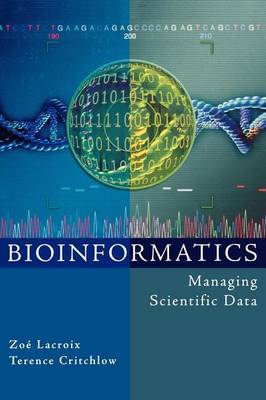Morgan Kaufmann Series in Multimedia Information and Systems
1 total work
Bioinformatics
Published 1 January 2003
Life science data integration and interoperability is one of the most challenging problems facing bioinformatics today. In the current age of the life sciences, investigators have to interpret many types of information from a variety of sources: lab instruments, public databases, gene expression profiles, raw sequence traces, single nucleotide polymorphisms, chemical screening data, proteomic data, putative metabolic pathway models, and many others. Unfortunately, scientists are not currently able to easily identify and access this information because of the variety of semantics, interfaces, and data formats used by the underlying data sources.
Bioinformatics: Managing Scientific Data tackles this challenge head-on by discussing the current approaches and variety of systems available to help bioinformaticians with this increasingly complex issue. The heart of the book lies in the collaboration efforts of eight distinct bioinformatics teams that describe their own unique approaches to data integration and interoperability. Each system receives its own chapter where the lead contributors provide precious insight into the specific problems being addressed by the system, why the particular architecture was chosen, and details on the system's strengths and weaknesses. In closing, the editors provide important criteria for evaluating these systems that bioinformatics professionals will find valuable.
Bioinformatics: Managing Scientific Data tackles this challenge head-on by discussing the current approaches and variety of systems available to help bioinformaticians with this increasingly complex issue. The heart of the book lies in the collaboration efforts of eight distinct bioinformatics teams that describe their own unique approaches to data integration and interoperability. Each system receives its own chapter where the lead contributors provide precious insight into the specific problems being addressed by the system, why the particular architecture was chosen, and details on the system's strengths and weaknesses. In closing, the editors provide important criteria for evaluating these systems that bioinformatics professionals will find valuable.
